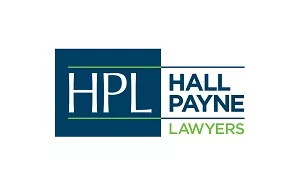The 2023 decision in Wilson v Gold Coast Hospital and Health Service [2023] QSC 135 sheds light on the employer's duty of care to its employees and the consequences of failing to meet that duty, particularly in high-pressure environments like healthcare. In this article, we will dissect the facts, findings, and implications of this significant case, which resulted in a worker's compensation common law damages award of over $1.6 million to the injured worker.
Background leading to workplace injury
The plaintiff, a nurse, was working in a highly challenging ward, responsible for caring for patients with cognitive vulnerabilities and aggressive tendencies. On the day of the incident, the plaintiff was informed about a patient, referred to as M, who had a history of violent behaviour, including previous assaults on nurses. On the day of the incident, M's behaviour escalated, and she became increasingly agitated and violent, lunging at hospital staff.
Despite having two security officers present to hold her down for the administration of medication, M's legs were unrestrained. This required the plaintiff to involve herself in restraining M while administering medication, during which she was thrashed at and kicked by M.
The plaintiff consequently sustained significant injuries.
Foreseeable risk and employer's duty of care obligation
The key issue in this case revolved around the hospital's duty of care to its employees. The law mandates that an employer must take reasonable care for the safety of its employees and not expose them to a foreseeable risk of injury. The risk must not be insignificant, and the employer is required to take reasonable precautions against it.
In this instance, M's history of aggression and unpredictable behaviour made the risk of physical injury to the plaintiff foreseeable. The defendant's counsel even acknowledged the risk by stating that staff assault risks are precisely why policies and security personnel exist.
Thus, it was found that M indeed posed a foreseeable and not insignificant risk of physical injury.
Was the risk of injury insignificant?
The defendant argued that given the presence of two security officers, the risk of injury posed by M was insignificant. However, the court found this argument lacking.
The risk was evident in M's behaviour - she had attacked her partner, attempted to choke her nurse, resisted restraint, and become agitated without a trigger. The presence of security officers was a response to the risk, not a reduction of it.
Court finds reasonably practicable precautions were not taken by the employer
The heart of the matter revolved around whether the defendant had taken all reasonably practicable precautions to protect the plaintiff from harm.
The court found several inadequacies in the defendant's approach:
Response to Code Black
While a Code Black (an emergency involving aggressive behaviour) was not officially called, the situation certainly warranted such a response, given M's escalating behaviour. The security officers who attended the scene should have called for additional backup, in line with the hospital's procedures for such incidents.
Training and instruction
The court found that the plaintiff, as a nurse in a challenging ward, should have been trained not to participate in the physical restraint of a patient. The responsibility of restraint should have been left entirely to security officers; where a Code Black should have been called so that more security officers could be present.
According to the defendant's procedures, the role of the nurse should have been merely to "reassure the patient restrained and to administer medication to them."
Assessment of violence risk
The hospital did not complete the mandated OVRATs (Occupational Violence Risk Assessment Tool), which would have provided a clear evaluation of the risk of violence in the ward.
Breach of duty, causation and court's judgement
The court concluded that the defendant breached its duty of care to the plaintiff by not taking reasonably practicable precautions. Had the plaintiff not been involved in the physical restraint of M, it is probable she would not have been injured.
In the end, the court made a judgment in favour of the plaintiff nurse, finding that the defendant was liable for the injuries sustained as a result of the negligence, and ordered the defendant to pay $1,634,418.55 in personal injury compensation.
Implications
This case serves as a stark reminder to employers about the paramount importance of employee safety, particularly in high-risk environments like healthcare. Employers must ensure that they are adhering strictly to policies, conducting appropriate risk assessments, and providing adequate training to staff. Failure to do so can result in significant liabilities, as evidenced by the substantial award of damages in this case.
Furthermore, this case emphasizes the need for clear delineation of roles and responsibilities. In high-pressure situations, it is crucial that each member of the team knows their role and responsibilities and, more importantly, what they should not be doing.
In high-risk environments, the line between routine duties and unforeseen dangers can often blur. It is the responsibility of the employer to ensure that this line remains clear and that all employees are adequately trained, supported, and protected.

